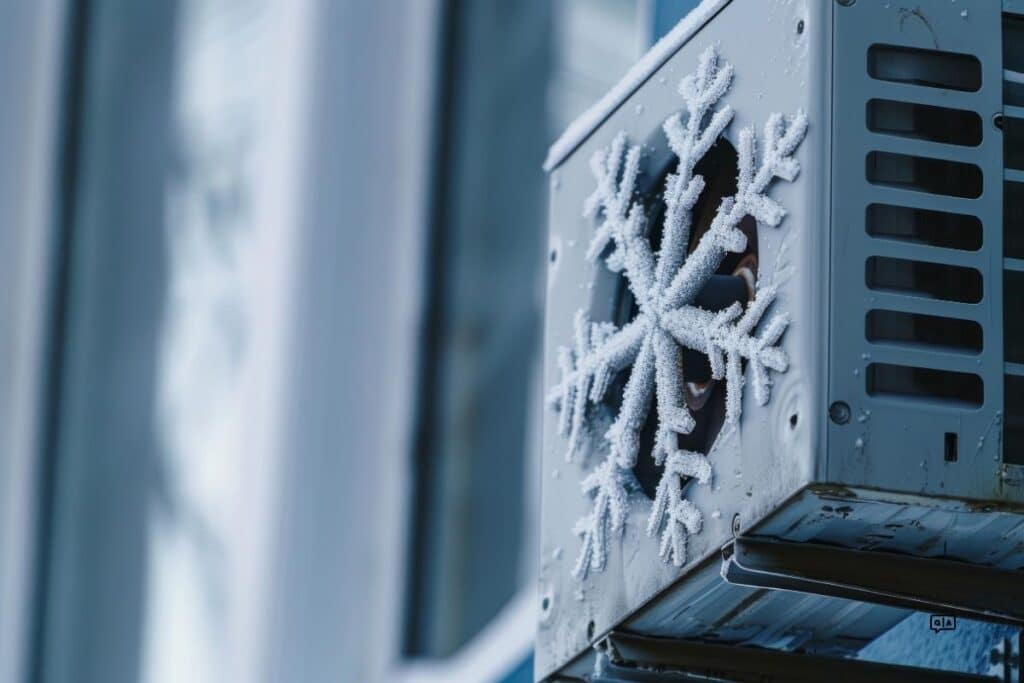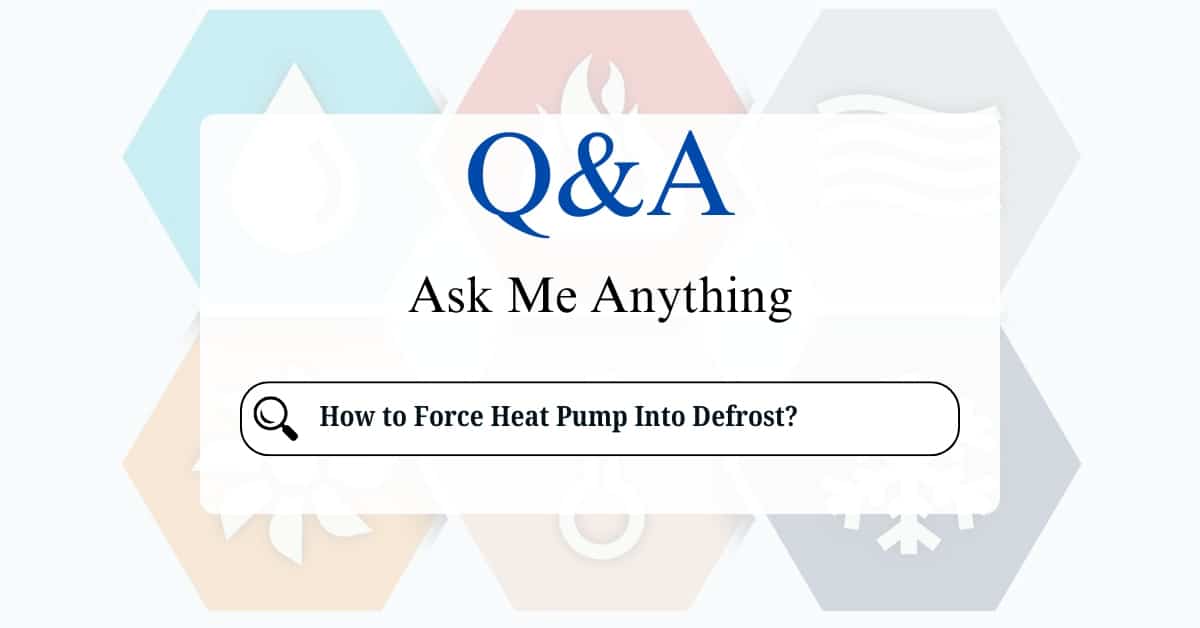When the colder months arrive, the defrost mode can be a real lifesaver for your heat pump! This feature helps clear away any frost or ice that might build up on the outdoor unit, ensuring everything runs smoothly.
Heat pumps can sometimes freeze up when temperatures drop, even if it’s above freezing outside! This happens because the outdoor coil of your heat pump often runs about 10 to 20 degrees colder than the air around it.
For example, on a 39-degree day, the coil might be chilling at around 24 degrees. If the dew point is up around 33 degrees that same day, moisture in the air will condense on the coil. Since water freezes at 32 degrees and the coil is a chilly 24, that moisture immediately turns into frost. So, it’s all about those temperature differences!

Heat Pump Defrost Cycle
- Heat pumps enter defrost mode when the outdoor coil temperature sensor detects frost or ice buildup.
- During defrost, the heat pump temporarily reverses its operation to heat the outdoor coil and melt the ice.
- Most systems automatically defrost based on a timer or temperature sensors.
If your heat pump is not automatically entering defrost mode when needed, you can manually activate it to ensure proper operation. Here is a detailed step-by-step guide to manually start defrost mode.
Step-by-Step Process to Manually Start Defrost Mode
1. Turn Off the Thermostat
- Go to your thermostat and set it to the Off position to temporarily stop the heat pump from running.
- This ensures the system is not actively cycling when you initiate defrost mode.
2. Locate the Defrost Control Board
- Find the defrost control board in the outdoor unit. It’s usually a small circuit board housed near the compressor or fan motor.
- Depending on the model, the board will have test pins, a defrost timer, or a sensor override feature.
3. Initiate the Defrost Cycle
Method 1: Use the Defrost Test Pins
- Locate two small test pins or terminals on the defrost control board.
- Connect the two test pins using a small insulated screwdriver or jumper wire.
- This action simulates the conditions needed to trigger defrost mode.
- The outdoor fan will stop, and the compressor will reverse operation to heat the outdoor coil.
Method 2: Adjust the Defrost Timer
- Some boards have a timer dial that controls the defrost frequency (e.g., 30, 60, or 90 minutes).
- Rotate the timer dial to a lower setting to force the system into defrost mode.
Method 3: Override the Sensor
- Locate the outdoor temperature or coil sensor connected to the defrost board.
- Disconnect the sensor temporarily, which forces the board to assume frost conditions and activate defrost.
4. Monitor the Defrost Cycle
- Listen for the reversing valve to click, which signals that the system has entered defrost mode.
- Observe the outdoor unit to confirm that the frost or ice is melting from the coils.
- The cycle should last a few minutes before automatically returning to heating mode.
5. Reset the System
- Once defrost is complete, reconnect any sensors or pins that were altered.
- Restore the thermostat to the desired heating temperature and ensure the system resumes normal operation.
Another method to initiate the defrost cycle in a heat pump is by adjusting the position of the sensor. While relocating the sensor outside of the heat pump can be effective, it is recommended to use this technique only as a last resort. Improper placement of the sensor may disrupt the defrosting process, potentially leading to ineffective operation.
So, your heat pump’s defrost cycle isn’t working properly.
The next things to do are:
- Check the air filter and replace it if it’s dirty.
- Clear away debris from the exterior of the heat pump.
- Fix leaky overhead gutters.
- Turn the fan “ON” at the thermostat to test the blower fan motor.
Tips for Preventing Defrost Problems
- Clean the Outdoor Unit: Regularly remove debris like leaves or dirt from the outdoor unit to maintain proper airflow.
- Check the Drainage: Ensure proper drainage around the unit to prevent water from refreezing.
- Schedule Regular Maintenance: An HVAC technician can check refrigerant levels, sensors, and defrost components annually.
- Monitor Ice Buildup: Don’t allow excessive ice to accumulate, as it can damage the system over time.
When to Call a Professional
If the heat pump doesn’t enter defrost mode manually or automatically, professional assistance is required to address potential issues such as:
- Faulty defrost control board.
- Damaged reversing valve.
- Malfunctioning temperature or coil sensor.
- Refrigerant issues causing excessive frost buildup.
Following these steps, you can force your heat pump into defrost mode and restore its efficiency in removing frost or ice buildup. If the system doesn’t respond, contact a licensed HVAC professional for diagnosis and repair.






